Devata of Bakong
Following close on the heels of the rich vein of lintels to be found at the pyramid temple of Bakong, the 9th century capital city of King Indravarman I at Hariharalya, or Roluos as its known today, here are a few of the devata that flank the doorways of some of the eight brick towers at the foot of the pyramid shrine. They share this position with male dvarapalas too, which I will post soon. The devata are made of sculpted brickwork that would've been covered in lime mortar or stucco as it's also called, in their heyday, most of which has cracked and fallen away through time, leaving the exposed brickwork. The figures are in niches which offer representations of mini-temples in themselves. They stand on plinths with full-length skirts and wear conical hats but mother time hasn't been particularly kind to the majority of them in terms of their current appearance.
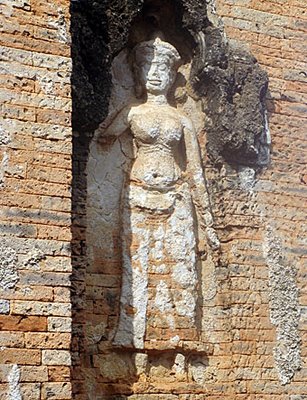 The style of the female form is in its early stages here at Bakong, not yet achieving the beautiful representations we see later at Angkor Wat for example
The style of the female form is in its early stages here at Bakong, not yet achieving the beautiful representations we see later at Angkor Wat for example
 The style of the female form is in its early stages here at Bakong, not yet achieving the beautiful representations we see later at Angkor Wat for example
The style of the female form is in its early stages here at Bakong, not yet achieving the beautiful representations we see later at Angkor Wat for exampleLabels: Bakong, Roluos Group
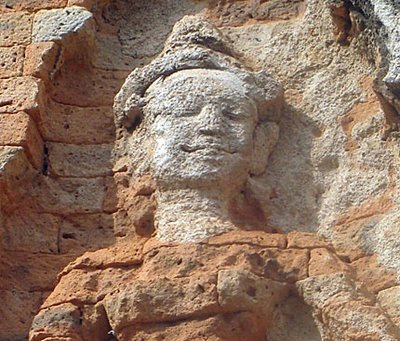
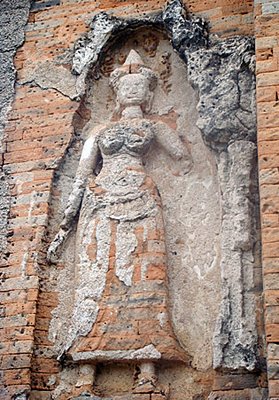
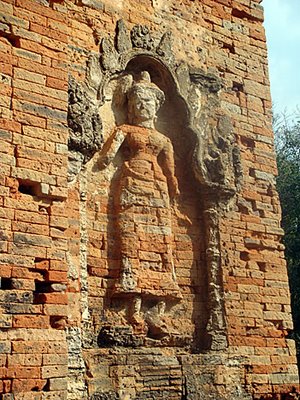
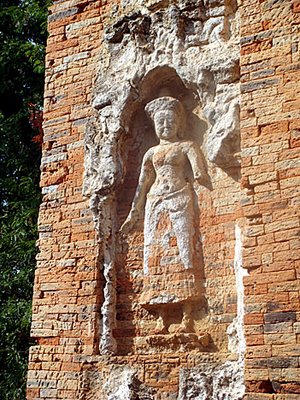
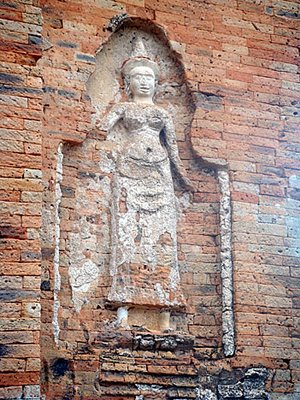
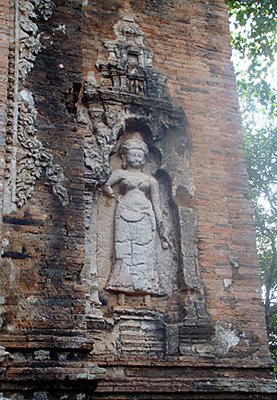


2 Comments:
Thank you for yet another excellent article on devata images in Khmer temples.
It's fascinating to compare representations of female images before and after Angkor Wat. Angkor Wat remains unique in the individuality portrayed by the women there, hence my research focus on that temple.
As this field of inquiry develops we will soon be able to map stylistic differences that will reveal additional information. Few societies on earth have featured women so prominently in their sacred imagery. There must be a reason. We just need to keep looking while asking "Why"?
I read a quote from Dorothy Parker yesterday that I'm sure you'll also relate to:
"The cure for boredom is curiosity.
There is no cure for curiosity."
Your site is truly the best resource on the web for anyone "curious"about Cambodia's past, present or future. Thank you!
(-; Kent
Kent, you make me blush... :-)
Thanks, Andy
Post a Comment
<< Home